“Long and silver-white, the vila’s hair is a comet trailing stardust in a glittering arc as she whirls round and round the moonlit midnight in a solitary dance that is the doom of any who witness it. Spirit, ghost, or goddess, none can tell her nature. The cold night wind her only garment, the vila’s bare feet graze the icy skin of the mountain air, as star by star she ascends above the pine-pillared hall of the evening forest.“
This week, in portrait number twelve of The People of Light and Shadow series exploring the characters and creatures of fairytale and folklore, we present “The Vila” as portrayed by Mary-Kate Arnold.
The vila (plural vile) is a the nymph of Slavic folklore. In some traditions they are woodland, mountain, water, and air spirits who hunt with bow and arrow like Artemis; in other tales, they are great warrior women, much like the valkyries of Norse mythology. They are characteristically described as maidens with ghostly skin and very long, fair (silver-white) hair—often their only covering—who can change their shape, become one with the wind, and who possess magical powers of enchantment. Some tales say that plucking a single hair will be the death of a vila; others tell that alone among all the creatures in the world, vile are immortal until they choose to die. Unlike the gentle nymphs and fey common to fairytales, vile have a dangerous side. In some stories, they are the spirits of brides who died before their wedding night. If provoked or slighted, vile seek vengeance upon the ones that wronged them. They are said to dance in circles beneath the stars, and in some tales their dances lure, entice, seduce, and entrap mortals to their doom.
Since the vila belongs to many different regional Slavic traditions, they are defined a little differently in each. The best known example of a vila (veela) in contemporary culture is the character Fleur Delacour from the Harry Potter series, who is a quarter vila. Anyone curious about them beyond a Wikipedia summary might check out the full text of “A Treatise on the South Slavic Vila,” by Dorian Juirć.
The Vila: Mary-Kate Arnold
Thanks in part to a personal cosplay photography group she directed, and in which I often took part, Mary-Kate Arnold has been one of my most-photographed subjects. When it came time to make new work again, one of my highest priorities was to reunite with old friends who I used to love to collaborate with and make something new with them. We’ve known each other for a long time now, been friends through thick and thin, and collaborated on so many projects in the past that working together is easy and casual. Mary-Kate is a font of ideas, perspective, hard-won wisdom, and talent, and I am grateful for our many collaborations and conversation.
Photography

On set, we discussed the vila’s skin, and Mary-Kate spoke of its unearthliness, its ghostly, ethereal nature. So I decided to shoot with the big 3′ x 4′ softbox without a grid camera right, so as to make for very smooth transitions between light and shadow over the skin. Camera left, we had a V-flat for fill, and behind camera an umbrella for filling shadows. The reference illustration (right), which Mary-Kate found and shared, drove the color palette and overall aesthetic of the portrait we were making.
For the first time since “The Changeling,” our first image in the series, we used the blue hand-painted canvas backdrop we made in the summer of 2020, and as usual our camera settings for this series were 85 mm, f/8, ISO 100, 1/200 sec. Thanks as always to Elizabeth MacDougald for her assistance with the session.
People of Light
In most of the portraits in this series, shadow has played a major part. There are exceptions, but I’ve favored shadow. The vila being the ghostly, ethereal nymph that it is, it seemed a good opportunity to change things up and add balance the series with another bright portrait.
Another of the main objectives for this series was to capture interesting expressions. I had begun to “standardize” poses for the series somewhat, and here in the second half I wanted to experiment a bit more. Near the end of the session, Mary-Kate turned her back to the camera, and we took some images featuring the vila’s full hair, where the camera captured her portrait in profile. We were both so happy with that direction that we decided to stop shooting after we’d captured them. We’d created something that looked different than anything else we’d shot and which added another perspective to the series.
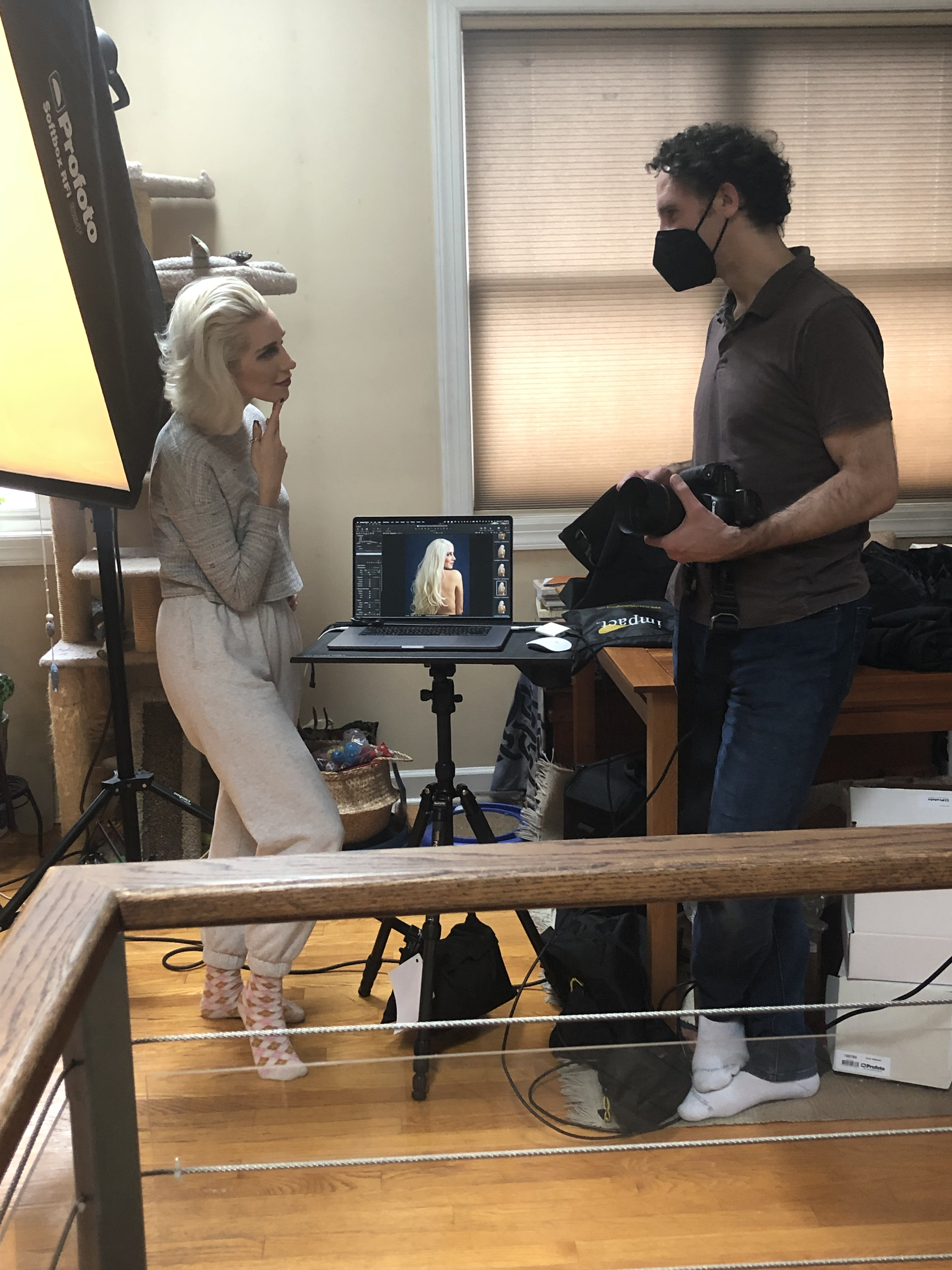

RIGHT: Bullied to the front of the editing chair by Willow the Cat.
Editing
As usual, the editing went through many (too many) stages, most of them trying to figure out what the portrait was to look like and eventually settling on something close to one of the original reference images (above). Along the way, I tried to put the vila in a forest (it drew focus from the subject), tried to straighten out the hair (swapping the texture of the curls for the straight lines of the hair made it less interesting to our eyes), and played with the levels of light, shadow, contrast, tone, and color, until finally finding just that certain look.
I’m always thinking of color these days, so shooting warm skin on a cool blue background sounded like the right direction for setting up a gentle complement, but the challenge was to move the overall portrait to an ethereal “vila” look, toning and softening with blue and silver, giving the flesh a pale, almost luminous quality while retaining a hint of that red complement so that the vila blended with her environment but with just enough contrast so as not to be swallowed up in it.
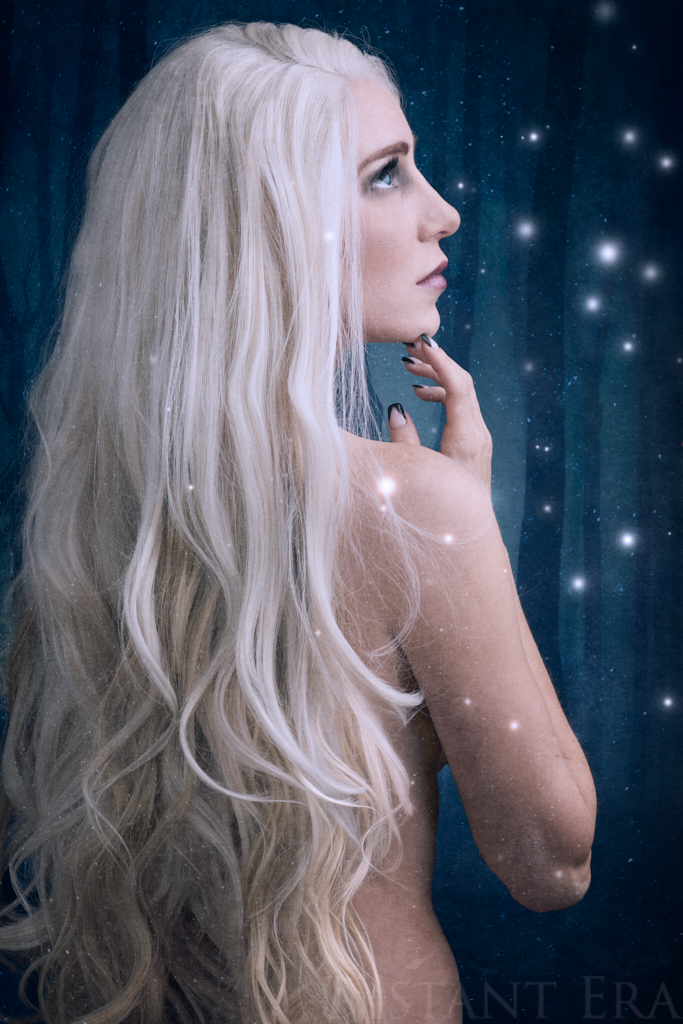

Vila Story Inspirations
Apart from the character of Fleur Delacour and an early-nineties run-in with her kindred Russian rusalka in Sierra Games’s Quest for Glory IV: Shadows of Darkness, I knew nothing about the vila, which makes for another rewarding experience learning about a creature of fairytale and folklore that was mostly new to me. I love that notion you never know what to expect from a vila. They may help you. They may come to your aid when you’re lost in the wilderness. Great warriors, they may fight on your side. On the other hand, they may just as easily lure you to your death, enchant you, or dance you to madness. Like many other creatures of folklore and fairytale, they have a peculiar weakness in that their power lies in their hair, but I don’t imagine they allow such things to happen. Immense thanks to Mary-Kate for introducing me to these fascinating, powerful nymphs from Slavic tales and for joining me for another project on the other side of the quarantine. Just like old times.
Next in The People of Light and Shadow series…
The pixie.

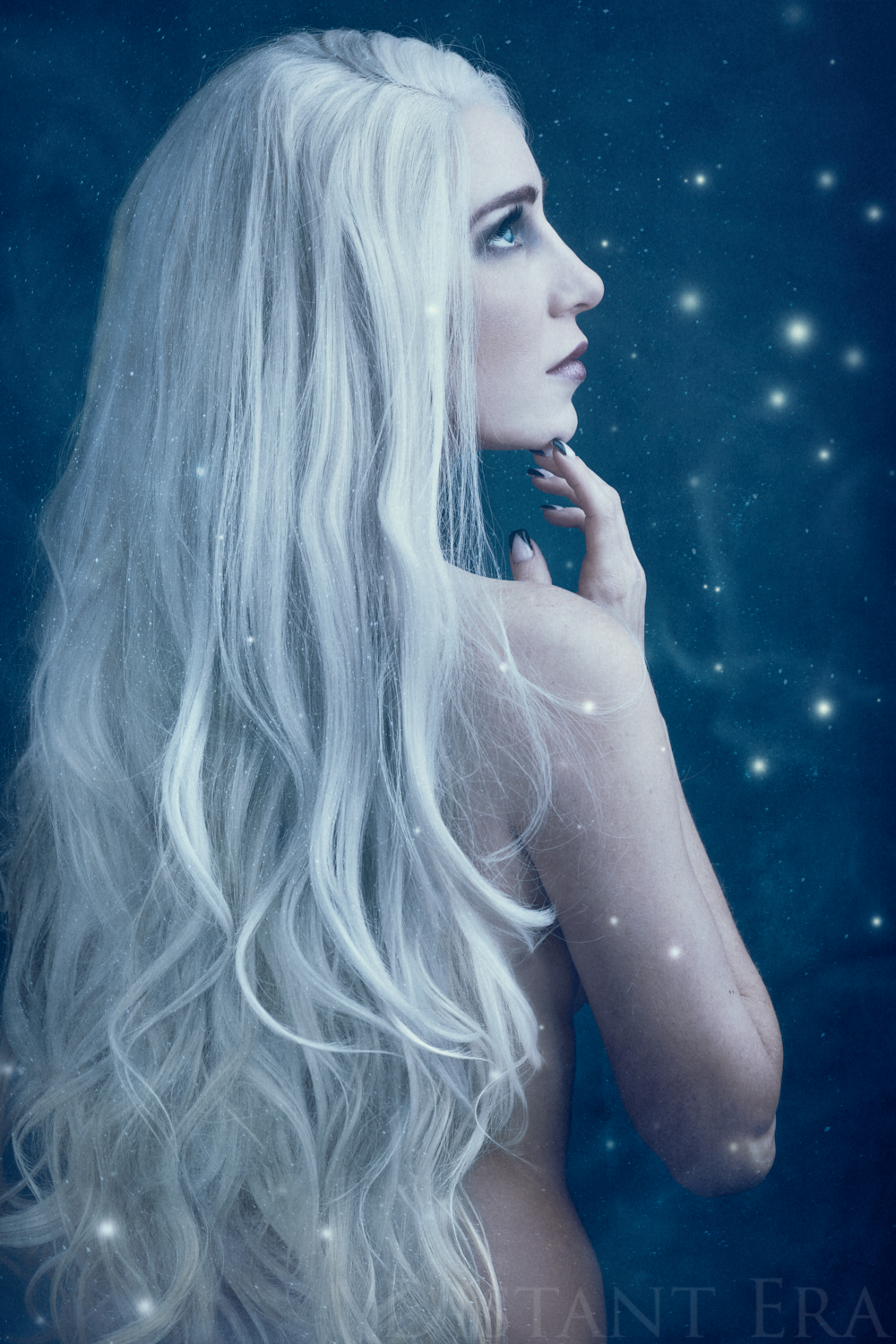

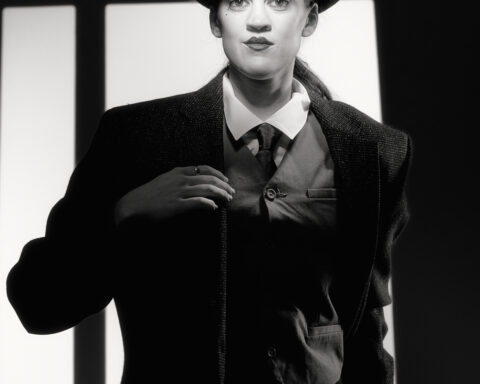

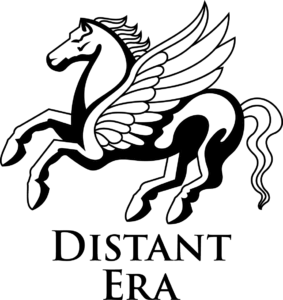
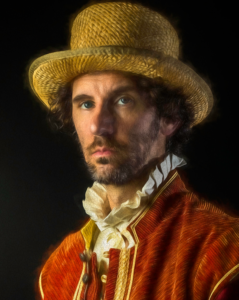
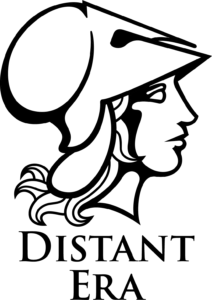
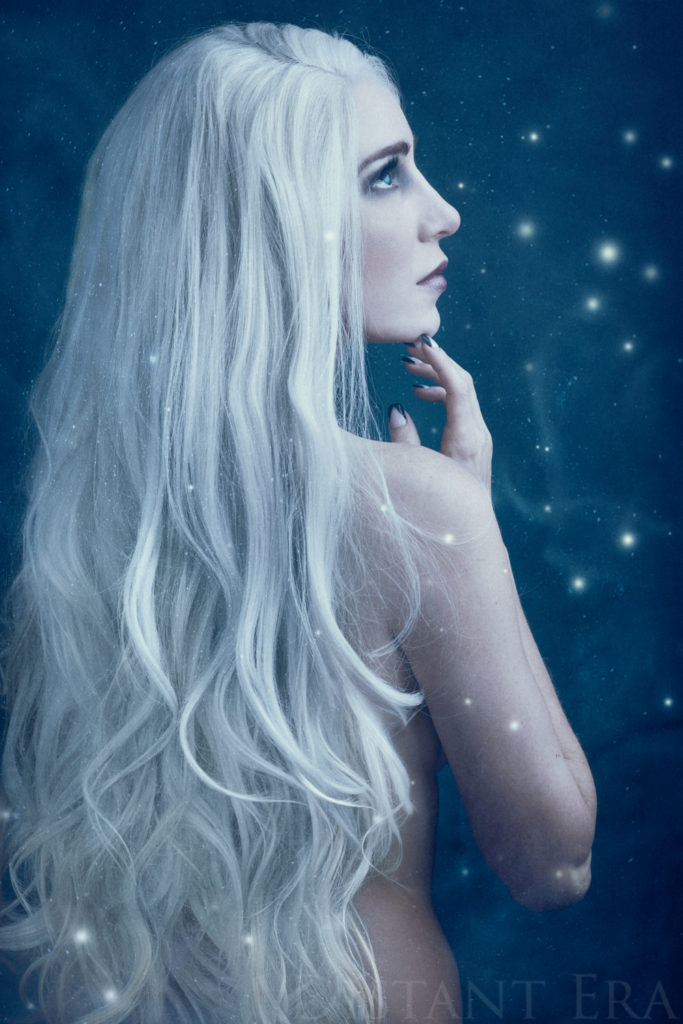

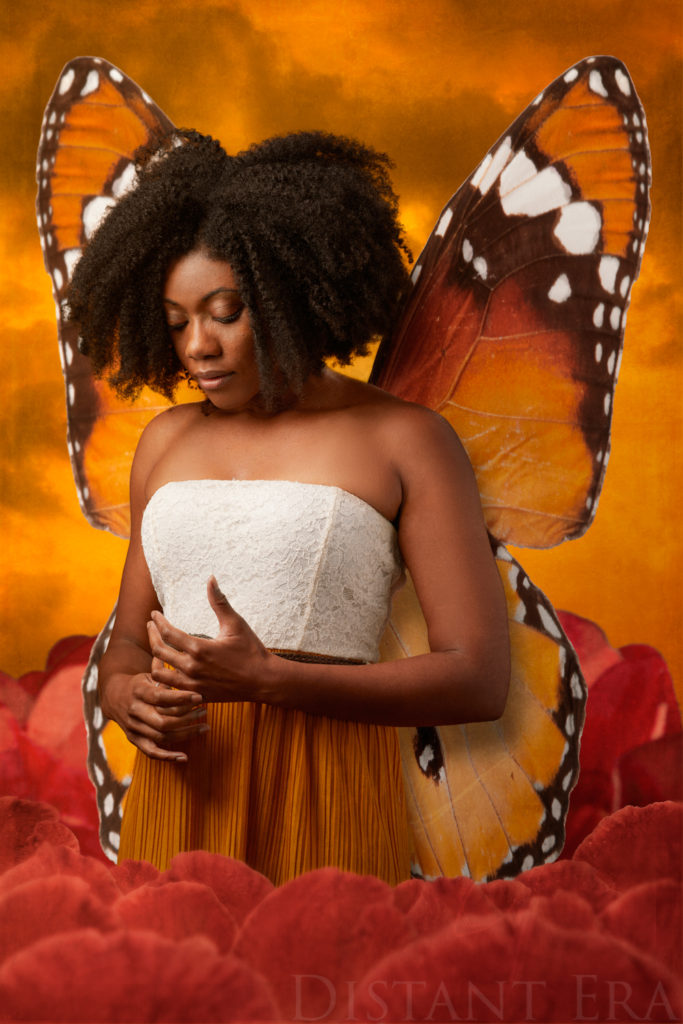
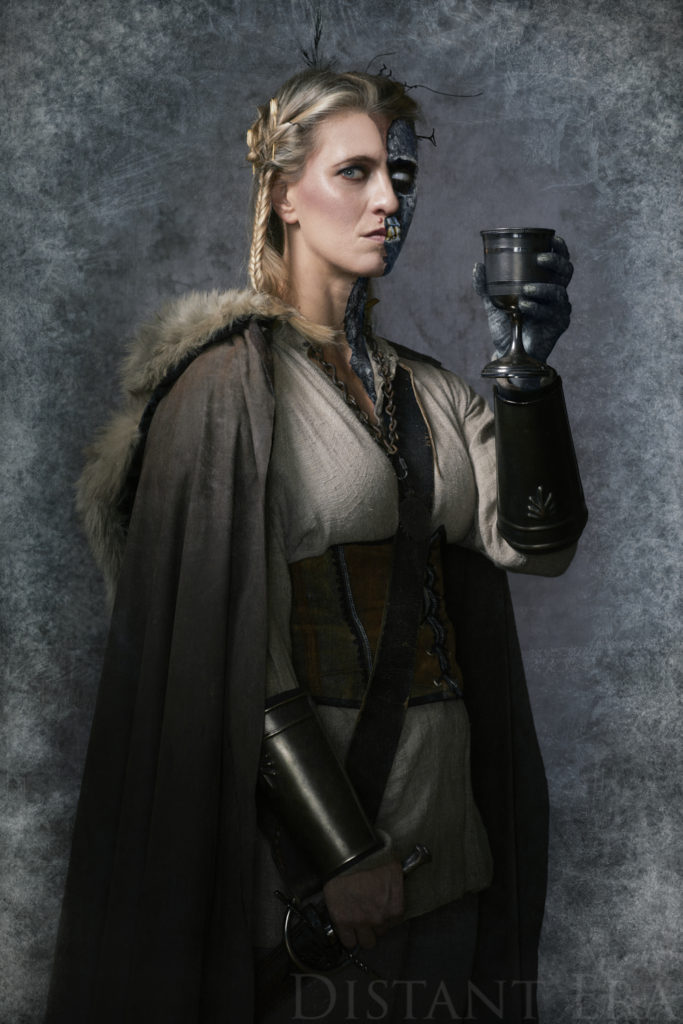
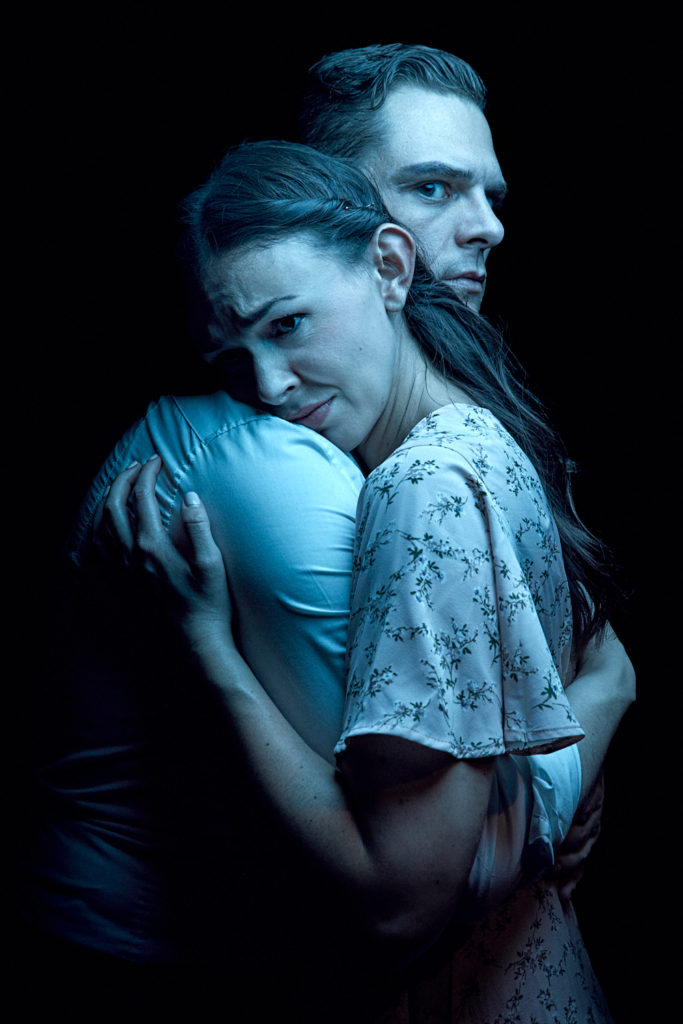
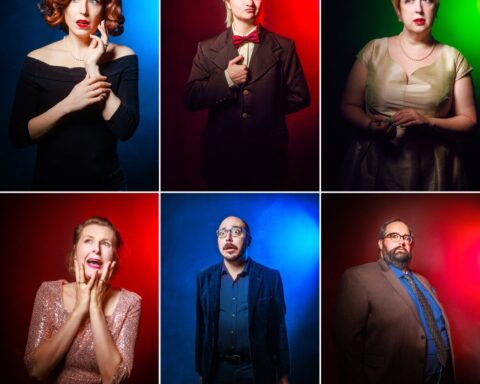
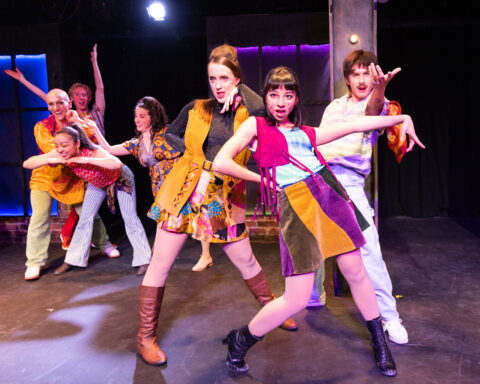
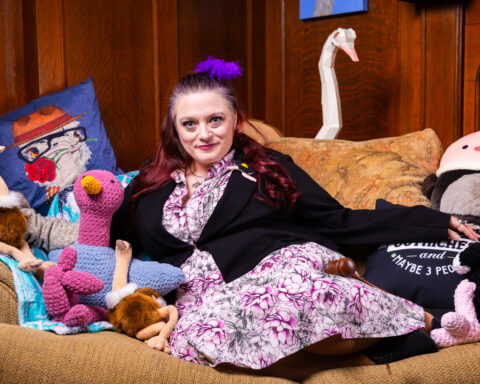

Follow Me